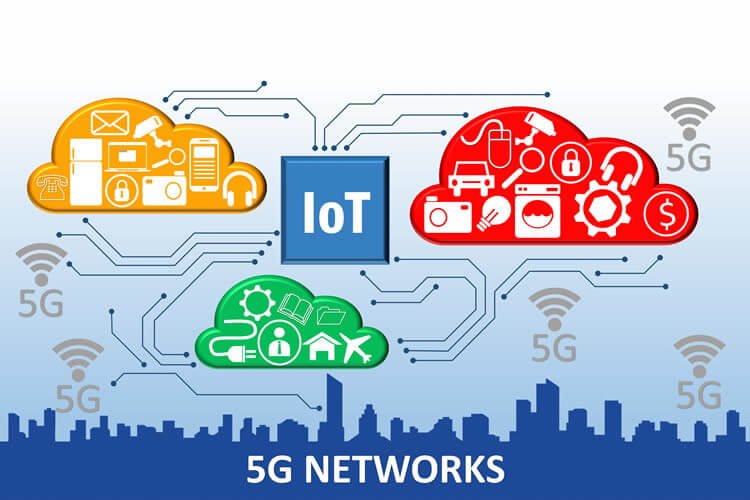IoT and 5G: Is the Smartness of Smart Cities Being Compromised?

The world is rapidly adapting to the innovative technological advancements. It not only adapts but simultaneously works to improve it as well. Similarly, smart living is the new trend that has emerged in recent years and everyone is diving into it.
The concept of smart cities and homes is becoming popular amongst people, even the ones that are not actively related to technology. Nowadays, people consider ‘smart’ technology as an epitome of modernization and adaptability.
IoT, 5G, and Smart Cities
The 5G connectivity is much faster than any other M2M communication introduced before like, 4G or 3G. With 5G connectivity, users will receive data in real-time. It will help the police and other authorities to gain accurate insights to incidents and reach the place of incident quicker.
Lag time, even for a few seconds, is an inconvenience for most people. Then again, with regard to smart cities, this could be a matter of life and death. Given a large amount of data generated by the Internet of Things (IoT) devices and 5G, information can be shared on a real-time basis. For example, sharing information about the conditions of roads by smart vehicles, like self-driving cars, which will modify to react accordingly.
The innovative prospects made possible because of these advancements are tremendous. However, it has also raised security risks. The consistent connectivity of all devices also means that if hacked, someone else can easily control the devices and get access to valuable data. To establish 5G on the grounds of a weak cyber-security foundation is similar to building a sandcastle; it can collapse anytime. It is not only a matter of individual security but national security.
Security concerning IoT and 5G
With advantages also come disadvantages, risks involved with 5G and the vast connectivity network of IoT are immense from the cyber angle. Cyber-attacks can plainly become a matter of life and death.
The networks of 5G are more vulnerable to cyber-attacks in multiple ways, in comparison to its precursors. The network moved from being centralized, hardware switching towards circulated, digital software-defined routing. In the software-defined 5G network, activity is pushed outwards through the network, hence refuting potential control and inspection chokepoint.
Cyber vulnerability is complicated further due to the virtualization of high-level software network functions that were performed formerly by physical applications. The activities are grounded on Internet Protocol language and renowned operating systems; whether used by criminal actors or nation-states. The uniform building block systems and protocols are valued tools for individuals seeking ill.
The dramatic bandwidth expansion, which makes the network of 5G conceivable, establishes superfluous attack possibilities. Physically, small cell, short-range, low-cost antennas deployed in urban areas become difficult targets. The cell sites use the capability of 5G’s Dynamic Spectrum Sharing, where manifold information streams apportion the bandwidth within slices; every slice has a varying cyber risk degree. When software lets the network function shift dynamically, the cyber protection should correspondingly be dynamic, instead of being dependent upon a constant solution of the lowest common denominator.
A huge risk of vulnerability is created by connecting tens of billions of IoT smart devices that are easily hackable. Given the technological advancements, numerous countries are planning to establish an inexhaustible and diverse range of activities that are IoT enabled. The devices range from battlefield devices, personal and public safety devices, medical equipment as well as transportation vehicles.
Good Faith in Security
The technological advancements are endless and so are the security risks. Then again, organizations are attempting to make security a priority in the products they offer. The fifth-generation networks are highly multidimensional and expand cyber-attack vulnerability. There is a need for a redefined cyber strategy for this new network ecosystem. The device, application and network organizations are highly mindful of the susceptibilities and are working in good faith to create an environment which is secure and minimize the risks as much as possible.
About the Author:
Khalid Durrani is the Digital Marketing Manager at Cubix, a leading Software Development Company. He likes to cover the topics related to latest tech, startups, IOT, Artificial intelligence, Blockchain and much more. He tries to humanize technology through inspirational content.
Image courtesy of Microwave journal